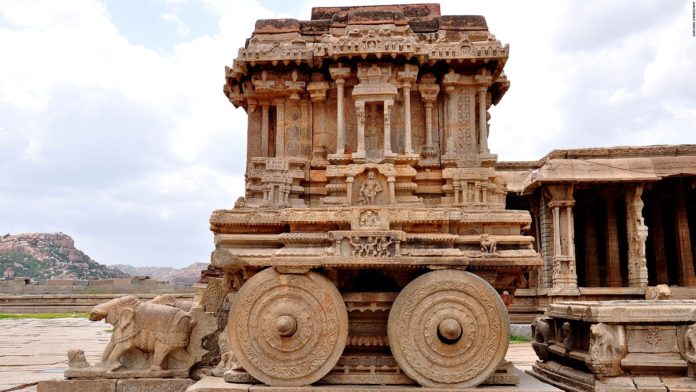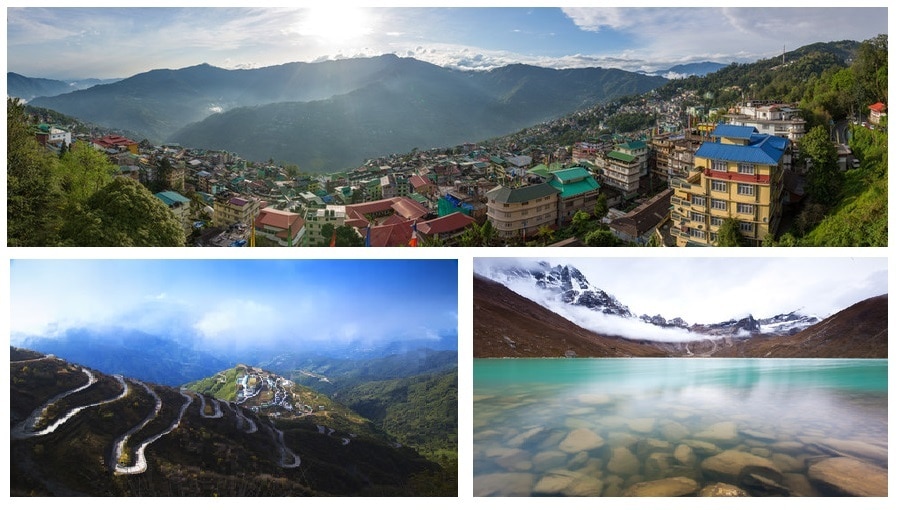Hampi is a small town located in the north part of Karnataka. Which was once a flourishing and prosperous kingdom, and the capital of the Vijayanagar dynasty. The Vijayanagar empire was created by Harihara and bukka raya. It came into power by fighting off Islamic invasions towards the end of the 13th century. Famed for its efficient governance and strong connections abroad; the empire brought southern India to the heights in both technology and fine arts. It is located on the bank of Tungabhadra river. Hampi is a small location covered an area of 25 sq.km. Vijayanagar rulers decorated and designed this city with lots of lovely temples, palaces, market streets and monuments. Which made this location one of the famous ancient architectural place and is selected as a world heritage site by UNESCO. Although Hampi was a metropolis but today it is in ruins and turned into rural location. It was ruined by Allaudin khilji.
Hampi is famous for its beautiful temples, majestic ruins, aquatic structures and royal embellishments of the time of yore that illustrate glorious past. A place of such great magnificence is sure to have a rich cultural heritage to it too. Hampi was a part of the Mauryan empire back in the third BC. There has been evidences that the rocks found in the Bellary district were a common form of recording relevant information in the times of Ashoka. Hampi was capital city during the four different dynasties altogether in the Vijayanagar city that came into existence in 1336 AD. During the reign of Krishnadevaraya of the Tuluva dynasty the Vijayanagar empire reached unfathomable heights.
Their mastery can be seen easily in the in the temples at Hampi, other examples are the engravings of horses or YALI can be found standing around 8 feet tall on the pillars of the temple.
Hampi also has a story which related it to lord Narasimha. The pillars of the temple show the different shades pf Prahalad life, who was an ardent devote of lord Vishnu. It’s also a strong belief of the people that the Muslim invaders destroyed the place not the prayers; Achyuta Raya built this magnificent temple of virupaksha which was one of the last temples to be built before the fall of the empire, temple is dedicated to the Hindu Lord Shiva. It is believed to be one of the oldest temples in India where people have been doing continuous worship to god for the last 7th century till date; there are many monkeys and elephants inside the temples. While it is located at present day Hampi, it was once a smaller shrine in the middle of the ancient and majestic vijanagara empire; there you will find the beautiful sone inscription from the 7th century. The temple has tall towers that act as a gateway, the gopurams lead to many inner corridors and halls, all decorated with ornate stone work. The sculpture depicts mythological stories of numerous gods. The replica or shadow of the tower of the temple falls inverted inside the wall of the temple through a lens like a hole structure. The method of photography was invented before 700 years.
The queen’s bath is also a part of the royal enclosure, this aquatic enclosure was the royal bath during the times of the Vijayanagar empire. It was built over 500 years earlier it was built in such a way that no outsider could ever enter.
Vittala temple is one of the prime attractions of Hampi dedicated to Hindu god lord Vittala. A stone made chariot in front of the entry of the temple gives extra beauty of the temple. Kadalekalu Ganesh an enormous statue about 14 ft high of lord Ganesh. Some big slender stone pillars with many mythological themes carved decorated the front hall of this statue. This is also known for exceptional architecture and unmatched craftsmanship. The iconic temple has amazing stone structure such as the musical pillars. It has 56 pillars. The cluster of musical pillars was carved out of huge single pieces of resonant stone.
Mahanavami dibba was built by king krishnadevaraya after his conquest over the present day of Orissa. It is the highest establishment in Hampi and possibly used by the kings to watch army procession, particularly Navaratri.
Lotus Mahal is an example of complex ancient Vijayanagar architecture. The original reason of use of this historical place is unknown. Probably It was used as a cultural entertainment where some regional forms of dances were performed.










